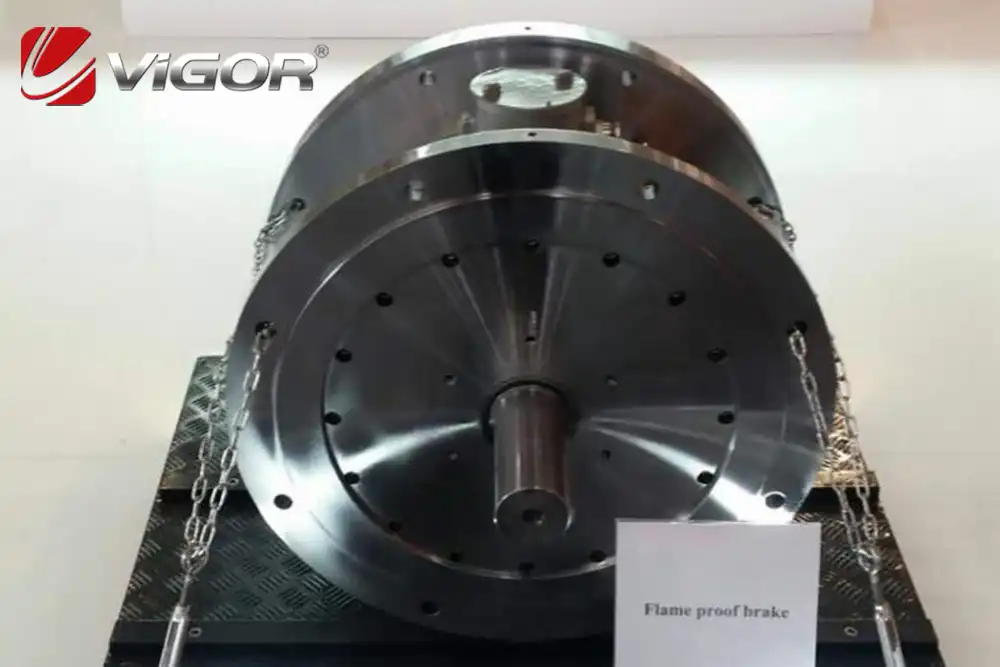
Knowledge
The Design, Materials, Production and Application of Disc Brakes
The design, materials, production and application of disc brakes for industrial equipment are summarized as follows:
I. Design
The design of disc brakes is a complex and meticulous process, involving precise calculation and optimization of multiple key parameters. Firstly, the diameter and thickness of the brake disc need to be carefully designed based on the load and braking requirements of the equipment to ensure sufficient braking force and heat dissipation performance. The inner and outer radii and area of the friction lining also need to be accurately calculated to ensure full contact with the brake disc and uniform wear. In addition, the pressure distribution of the brake wheel cylinder is also a key point in the design, directly affecting the braking effect and stability. There are various types of disc brakes, mainly divided into two categories based on the structure of the positioning elements in the friction pair: caliper disc brakes and full disc brakes. Among caliper disc brakes, fixed caliper disc brakes are widely used in light-load equipment due to their simple structure and easy maintenance, while floating caliper disc brakes are more commonly used in heavy-load equipment due to their good braking effect and strong adaptability. Full disc brakes provide a stronger and more stable braking effect when all the friction surfaces of the discs are in full contact. According to different usage environments and requirements, industrial disc brakes can be further classified into various types such as normally open, normally closed, and adjustable types to meet the braking needs of different working conditions.
II. Materials
The selection of materials for disc brakes directly affects their braking performance and service life. As a core component, the material choice for brake discs is particularly crucial. Cast iron has been the main material for traditional brake discs due to its good wear resistance and relatively low cost, and is suitable for most industrial equipment. However, with technological advancements, metal matrix composites have gradually emerged, especially aluminum matrix composites, which have become the preferred material for high-performance brake discs due to their light weight, good thermal conductivity, and strong wear resistance. The selection of friction materials for brake pads is equally important. They are typically composed of fillers, reinforcing fibers, binders, and friction performance modifiers. Non-metallic friction materials are widely used in light-load equipment due to their good friction performance and low cost, while metallic and semi-metallic friction materials are more commonly used in heavy-load and high-intensity conditions due to their excellent high-temperature resistance and wear resistance. The selection of each material requires strict performance testing and optimization to ensure the overall performance and reliability of the brake.
III. Production
The production process of disc brakes is a highly refined systematic engineering project, covering multiple stages such as raw material preparation, component processing, assembly, and testing. During the raw material preparation stage, each batch of materials undergoes strict quality inspection to ensure they meet the design requirements. In the component processing stage, high-precision CNC machines and advanced processing techniques are employed to ensure that the dimensional accuracy and surface quality of each component are optimized. The assembly stage requires strict adherence to the process flow to ensure the fit accuracy between components and the stability of the overall structure. The final testing stage is particularly crucial, as it involves simulating actual working conditions to test the braking performance, durability, and reliability, ensuring that each brake can operate stably in harsh industrial environments.
IV. Applications
Industrial equipment disc brakes, with their outstanding braking performance and high reliability, play an irreplaceable role in numerous industries. In the transportation sector, whether it be automobiles, trains, or aircraft, disc brakes are key components ensuring safe operation. In the construction machinery field, heavy equipment such as excavators, loaders, and forklifts have extremely high requirements for braking systems. Disc brakes, with their stable braking effect and long service life, have become standard equipment for these machines. Additionally, in the energy industry, wind power equipment and hydropower stations require frequent braking during operation. Disc brakes, with their excellent high-temperature resistance and wear resistance, ensure the safe operation of these facilities. In industries such as industrial machinery, metallurgy, and chemical engineering, disc brakes are also widely used in the braking systems of elevators, cranes, conveyor belts, and other equipment, providing a solid guarantee for the continuity and safety of industrial production.
In summary, the design, materials, production, and application of industrial equipment disc brakes constitute a systematic engineering process. Each link requires strict control and meticulous management to ensure that their braking performance and reliability meet the demands of various complex industrial environments. Through continuous technological innovation and process optimization, disc brakes not only ensure the safe operation of industrial equipment but also provide strong support for the sustainable development of various industries.
If you have any questions, demand, related parts development or improve your supply chain, please feel free to contact us atinfo@castings-forging.com




